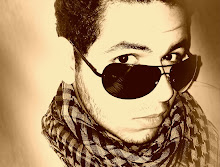Aujourd’hui nous découvrons le projet Twin Lofts réalisé par l’architecte Federico Delrosso. Deux lofts jumeaux - qui s’apparentent à un organisme unicellulaire divisé en deux volumes structurellement identiques et similaires en interne mais à l’opposé…

Pour la restructuration et l’intérieur des lofts jumeaux – conçus par Federico Delrosso – le travail s’est en fait sur une ancienne usine dans la partie sud de Milan, anciennement banlieue industrielle externe, aujourd’hui un quartier résidentiel.
L’architecte nous explique son projet (sorry c’est en anglais…) :
“This is a complex project, and you can read it in different ways. The most obvious result is the creation of twin lofts, with the same design as the internal spaces, because they were created by the dividing a single one long sleeve-shaped space lengthwise. But starting from the personal data of the residents (the first-loft A- is Delrosso’s own studio-home, the second-loft B- is the private home of Alessandro Sartori*, creative director of Zegna’s Z line)) I devised a project which developed the architectural details, the furnishings… the experience of the home in an individual way, in short by using materials and colours like the letters of an alphabet: to write similar, interlocutory or opposed phrases, but always with a coherent grammar.”
“The ground floors of the two lofts, for example, each comprise the mirrored halls, open kitchens, and the apertures onto the small private gardens, a long table with high seating, a bathroom and the staircase that goes up to the floors above. Working with the same elements I created interiors with different spirits. In the first one, in fact, the staircase is the strong element, thanks to its volumes (which incorporate the bathroom), the raw material (pickled iron) with bare welds and the risers of the stairs left hollow, so that as you go up your point of view changes and the staircase is lightened and acquires the consistency of origami.
In the second loft, by contrast, I dematerialized the staircase using crystal for the treads and transforming the supporting structure into a simple white stepped line (painted iron) which developed upwards. The bathroom is here an independent volume, somewhat mysterious, internally dark but with a surprise opening set high up…
Then the tables. They have diametrically opposite styles: linear and clearly defined the first, contemporary baroque the second. Even art lent me a hand in the construction of the specular layout of the ground floors. The party wall next to the entrance door has, in both homes, a painting by the same artist (Giovanni Manfredini). Shoulder to shoulder, in fact, I positioned two strong images in black and white, with the one almost the negative of the other. Like the colours used for the surfaces: all white for the satin-finish lacquered wood of the cabinets and work surfaces in Corian in the first; kitchen top in glossy steel and white lacquer and wengé for the cabinets in the second.
Symmetries and variations are also interlaced on the upper floors. On the first floor (living room for both) I installed a portion of glass flooring, to provide a glimpse of the kitchens below, but in the second loft this detail is enhanced because it is repeated over the shower in the ground-floor bathroom, and also in the staircase, which becomes even more transparent and visually light. In the first one instead the protagonists are the furnishings: a lounge suite with strong squared lines, Van Der Rohe’s Barcelona chair and the big mirror by Starck.
On the second floor I tried to invert not only the consistency but also the perception of the spaces. In the first I interrupted the strictly orthogonal interiors by introducing a circular bed and replacing the doors of the walk-in wardrobe by a whole wall made of soft white draperies. Beyond the confines, the sleeping quarters of the second loft, instead has a large white roundish bathtub, some elements derived from the world of fashion, like the silver and fuchsia chair, and a highly distinctive walk-in wardrobe in wengé wood with a mirror insert. The top level of the attic, in the first case is an all-white space designed as a guest room, while in the second it is a wellness space with small private gym.”
“It may happen that the relations between designer and client are troubled, but in this case I think we had a happy encounter of ideas, desires and “visions” which bred a perfect harmony of intents. This harmony could hardly help giving rise to a beautiful friendship and a specular project.
I felt the need of a home/den where I could live amid elements important to me: light, buoyancy and the fluidity of colour. Federico translated these inputs of mine into transparent materials (the staircases, a part of the floor, the absence of internal walls…), an almost complete white for walls and details, and then what I called “the absences”. That is to say, some parts of floor are absent, distinctive colours are absent… these “absences” are what that will enable me, eventually, to introduce “solids”: details, objects, colours.. . With this project Federico enabled me to experience an imperceptible sense of freedom, made up not of what I can materially see or touch, but of the infinite possibilities I will have in living in and furnishing my loft.”
“… I like talking about this project because in the colours (white, grey, natural brown and black), in the materials (glass, wood, corian and iron) and even in the small differences in the functions, I was able to explore a symmetry that was conceptual and ironic even before being structural and designed. For an architect this is a rare opportunity, so I used this work as an area of free experimentation for my future works.”










via

























































